
Classical Ancient Greek silhouettes
Browse 4,600+ greek pottery stock illustrations and vector graphics available royalty-free, or search for ancient greek pottery or greek pottery studio to find more great stock images and vector art.

Classical Ancient Greek silhouettes
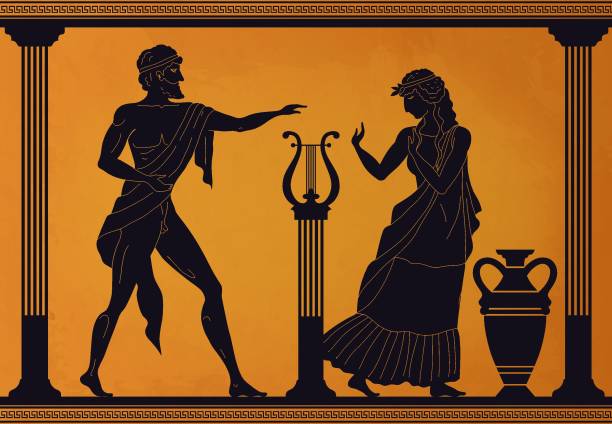
Ancient Greece scene. Antic vase with silhouettes of mythology characters and gods, Vector legendary Greek people mythological pattern old culture with woman and man in toga with lyre and amphora

Roman ancient amphora or red-figure vase flat vector illustration isolated on white background. Example of ceramic pottery art in Ancient Greece and Rome.

Collection of beautiful ancient Greek pottery patterns in black and white color.
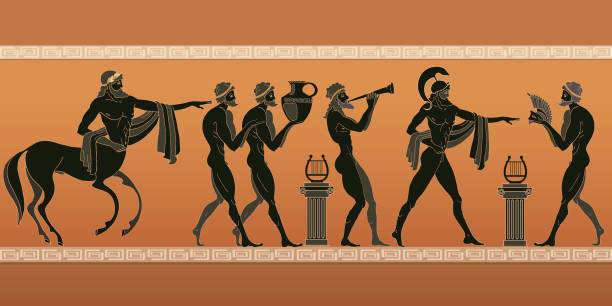
Ancient Greece scene. Black figure pottery. Ancient Greek mythology. Centaur, people, gods of an Olympus. Classical Ancient Greek style
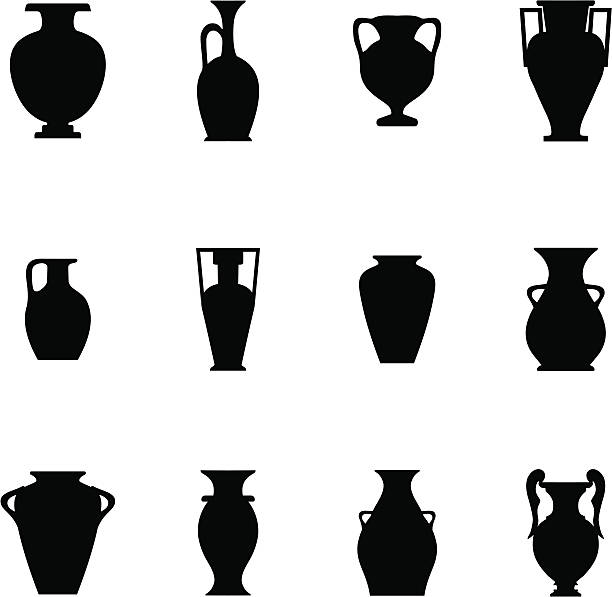
Black icons representing different shapes of potteries.
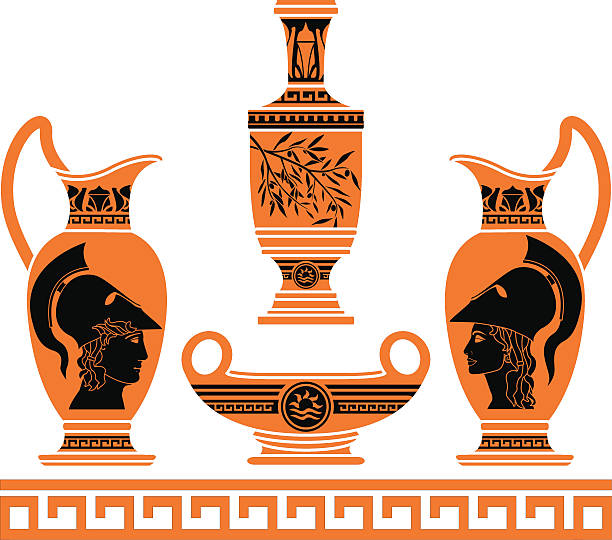
set of hellenic vases. stencils. vector illustration

Ancient Greek vases: 1) Krater; 2) Stamnos (storage vessel); 3) Panathenaic amphora, Athens; 4) Bottle; 5) Pitcher; 6) Lekythos (Oil jug); 7) Dodwell vase (Corinth); 8) Oil jug, Athens; 9) Kyathos (dipper); 10) Wine jug. Chromolithograph after ancient vessels, published in 1897.

Antique pottery vases. Cartoon old vase, old pot, greek amphora, ancient urn with decorative ornaments and patterns. Clay ceramic decoration vector set. Crafted jar with ethnic painting

Vintage engraving of Ceramic art, Ancient Greek, Cyprian and Etruscan
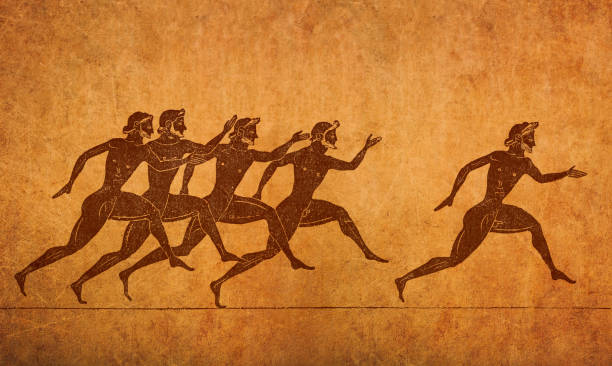
Greek vase showing men running a race ( Fifth period 431 - 404 ) Original edition from my own archives Source : Historia de los griegos 1891

Cartoon greek pots. Ancient pottery ceramic vases, old antique pot jug jars vase, isolated collection craft earthenware of greece, clay ornament oil bowl, vector illustration. Vase clay, pot greek

Collection of beautiful ancient Greek pottery floral patterns in black and white color.

Isolated vases on white background. Ancient Greek vases. Vector illustration

Ancient Greek vase with a painted motif of a messenger scene. Wood engraving after an ancient Greek vase painting in the National Archaeological Museum, Naples, published in 1885.

A flat design icon on a transparent background (can be placed onto any colored background). File is built in the CMYK color space for optimal printing. Color swatches are global so it’s easy to change colors across the document. No transparencies, blends or gradients used.

Repetitive abstract pattern, traditional vase decoration
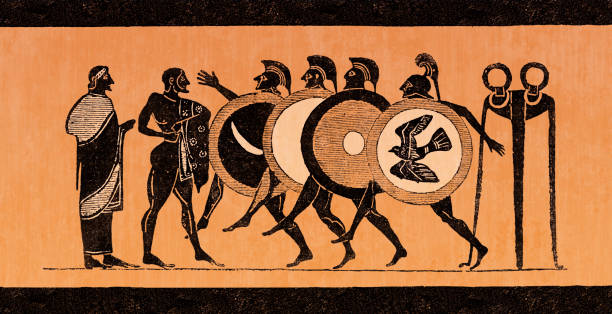
Greek vase showing soldiers meeting politicians in Olympia Greece ( Fifth period 431 - 404 ) Original edition from my own archives Source : Historia de los griegos 1891

Black greek warriors. Ancient greece mythology mural art on vase, history battles roman warrior silhouette scene, antique rome or athens pottery pattern recent vector illustration original artwork

Greek pottery jugs set. Urns, amphora, tall vases with ancient ornaments, old jugs and pots for oil. Vector illustrations for earthenware, traditional culture, antique art concepts

Greek Vases Black Silhouettes in A Simple Style. Vector Illustrations of various Clay Vessels for creating Patterns, Prints, Posters, Collages and more.
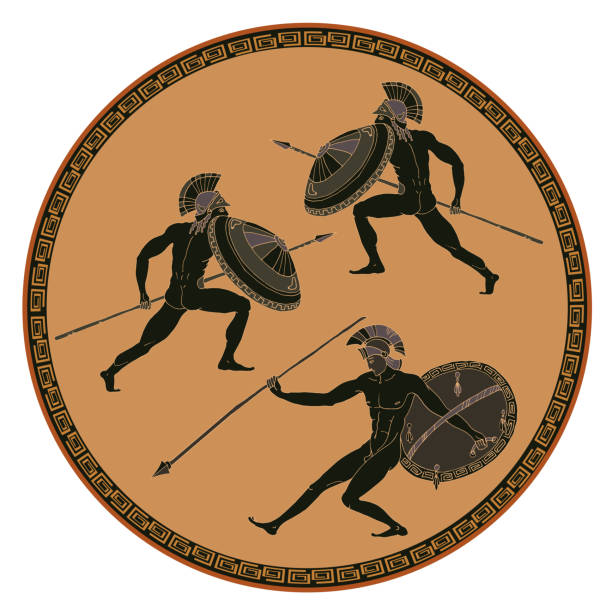
Ancient Greek soldiers. Black figure pottery. Ancient Greece mural painting. Spartans, gladiators

Modern hand drawn seamless pattern in cartoon ancient greek style Tenplate abstract background with ancient greek statue and classic vintage icons Vector trendy illustration

Ancient greek painting.Pottery art.. Mediterranean culture.Ancient greece mythology.

Ancient greek painting.Pottery art.Stylized ancient greek background. Mediterranean culture.Deities and heros of antique greece

Vintage engraving of a Design of an ancient greek vase

Ancient greek painting.Pottery art.Stylized ancient greek background. Mediterranean culture.

Drawing of greek artwork vase Original edition from my own archives Source : Brockhaus 1895
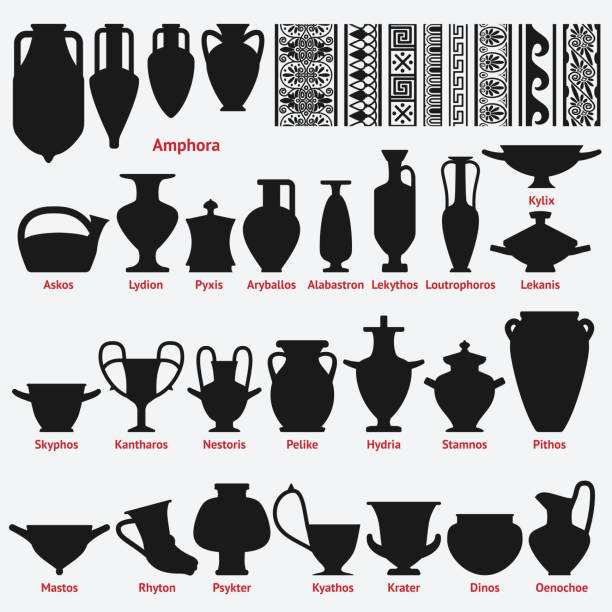
Set of antique Greek vases and border decoration seamless patterns. vector illustration - eps 8

Greek vase showing men running a race ( Fifth period 431 - 404 ) Original edition from my own archives Source : Historia de los griegos 1891
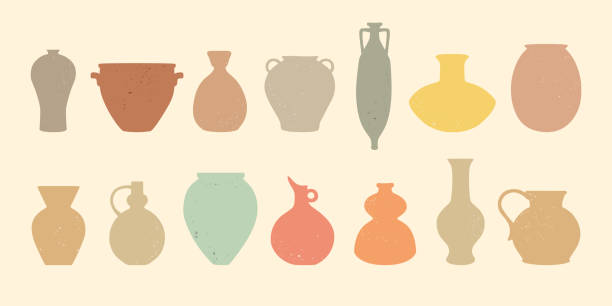
Clay vases of various shapes, traditional pottery silhouettes with lightly grunge texture, pastel, terracotta and earthy color ceramics, different vessels, jugs, amphoras, pots and vases
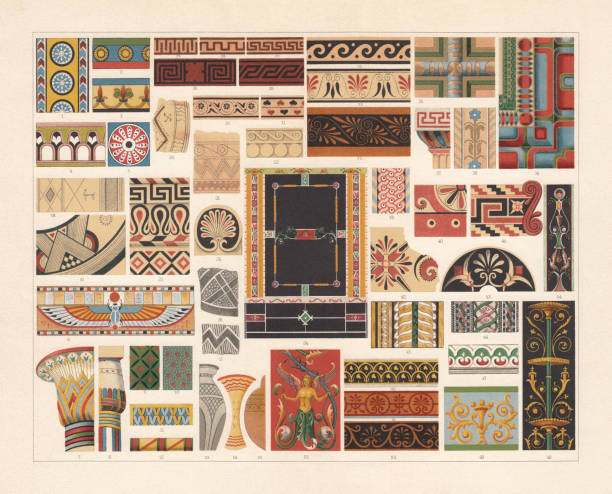
Various patterns of antiquity: 1-5 Assyrian: 1) Nimrud; 2) Nineveh; 3 - 5) Dur Šarrukin (Khorsabad). 6 - 15 Egyptian: 6) Ornament of a mummy coffin; 7) Bell-shaped capital; 8) Bud capital; 9 - 10) Textile ornaments; 11) Quiver ornament; 12) Painted stick; 13 - 15) Pottery. 16-17: Ceramic shards from Troy. 18 - 19: Cypriot clay pots. 20 - 39 Greek: 20 - 21) Ceramic shards from Mycenae; 22) Architectural ornament (Mycenae); 23) Cornice (Olympia); 24) Antefix (Olympia); 25 - 29) Meander ornaments of vases; 30 - 31) Leaf and plant ornaments; 32 - 34) Palmette ornaments of vases; 35 - 36) Ceiling of the Theseus temple (Athens); 37) Doric capital (Parthenon); 38 - 39) Wall painting. 40 - 43 Etruscan: 40) Stucco painting; 41 - 42) Wall painting; 43) Antefix. 44 - 54 Roman: 44 + 49) Wall painting; 45 - 46) Mosaic; 47) Stucco painting; 48) Pompeian wall painting; 50 - 52) Pompeian frieze painting; 53) Painted relief from Pompeii; 54) Wall painting of a dining room in Pompeii. Chromolithograph, published in 1897.

Greek vase showing soldiers at military training in Olympia Greece ( Fifth period 431 - 404 ) Ephebe from the Greek ephebos is the term for an adolescent male. In ancient Greek society and mythology, an ephebos was a boy, aged 17–18, who went through a period of initiation that included military training. Original edition from my own archives Source : Historia de los griegos 1891

Greek Amphora - Scanned 1882 Engraving

Ancient greek painting.Pottery art.Stylized ancient greek background. Mediterranean culture.Deities and heros of antique greece
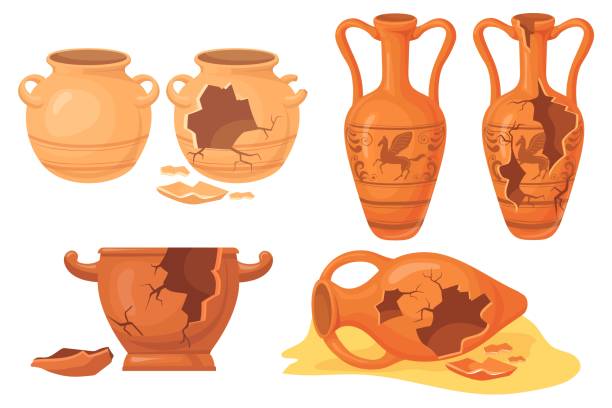
Cartoon broken pottery. Old cracked ceramic vases, history archeology urn for museum, ancient clay pots jar jug vessel, greece or roman artefacts, isolated neat vector illustration and broken pottery

Greek vases silhouettes. Ancient amphoras and pots with meander pattern. Glyph illustration. Clay ceramic earthenware. Vector

Vector banner on the theme of Ancient Greece in the form of a set of stone tiles, clay or ceramic tiles in retro style. Illustrations with Greek ornaments, amphorae and Ancient Greek ship.

Classical greek vase art, warriors

Traditional symbols of Greece. Monochrome icons

vector seamless pattern with ancient amphora. illustration background in black-figure pottery and red-figure vase painting style.

Various examples of pottery from Ancient Greece. Vintage halftone etching circa late 19th century. From left to right; Krater, Kantharos, Kylix, Oenochoe, Aryballos and Hydria.

Greek vase showing soldiers at military training in Olympia Greece ( Fifth period 431 - 404 ) Ephebe from the Greek ephebos is the term for an adolescent male. In ancient Greek society and mythology, an ephebos was a boy, aged 17–18, who went through a period of initiation that included military training. Original edition from my own archives Source : Historia de los griegos 1891
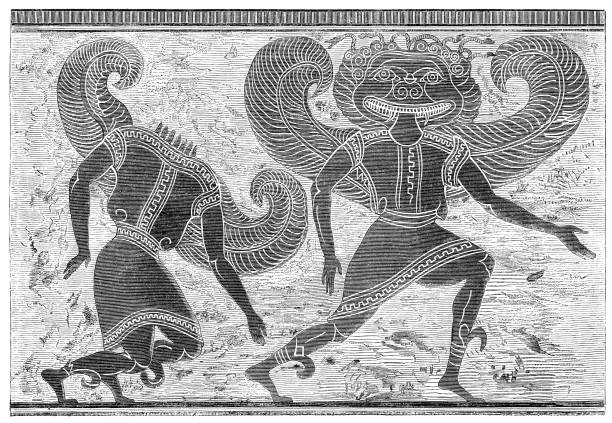
Images depicting the mythological creatures of the Gorgons on Athenian pottery circa 6th century BC from Magasin Pittoresque. Vintage etching circa mid 19th century.

Greek Vases in A Trendy Minimal Linear Style. Vector Illustrations of various Clay Vessels in Terra colors for creating Patterns, Prints, Posters, Collages, Logos, and more.

Ancient Greece scene. Black figure pottery. Hunting for a Minotaur, gods, fighter. Classical Ancient Greek style
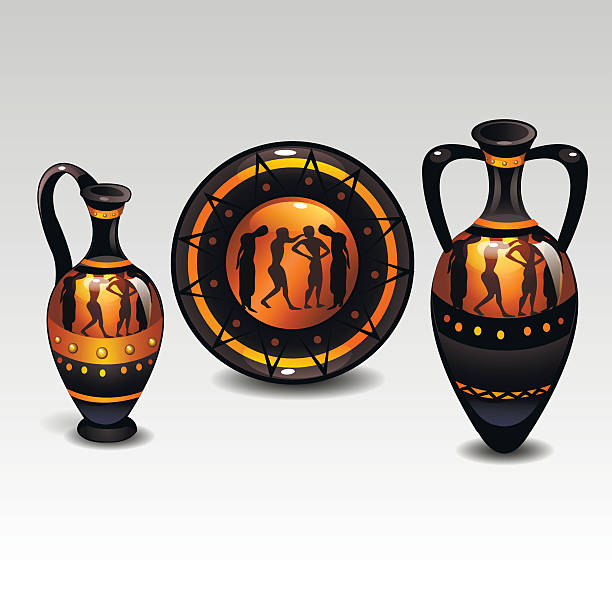
illustration of ancient Greek dishes

Greek vase showing soldiers at military training in Olympia Greece ( Fifth period 431 - 404 ) Ephebe from the Greek ephebos is the term for an adolescent male. In ancient Greek society and mythology, an ephebos was a boy, aged 17–18, who went through a period of initiation that included military training. Original edition from my own archives Source : Historia de los griegos 1891
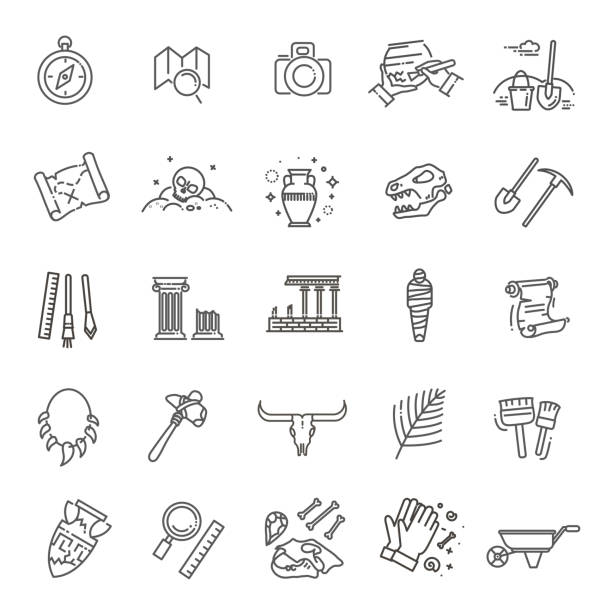
Outline black icons set in thin modern design style, flat line stroke vector symbols - archeology collection

Vector graphics - a set of six ceramic vases of different shapes with black and orange traditional geometric Greek ornament isolated. Concept culture traditions - tourist souvenir
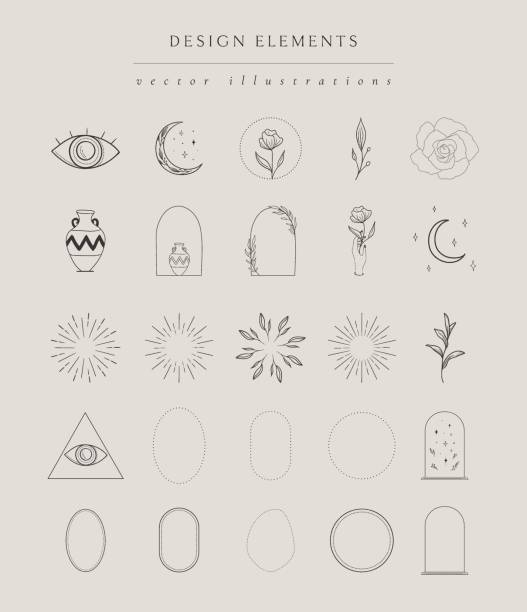
Collection of vector hand drawn design elements, geometric frames, borders, detailed decorative illustrations and icons for various ocasions and purposes. Trendy Line drawing, lineart style
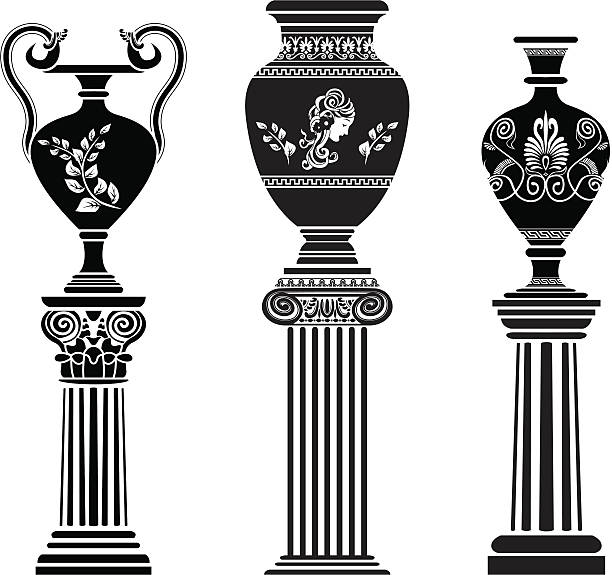
Ancient Greek vase on column. stencil set second variant